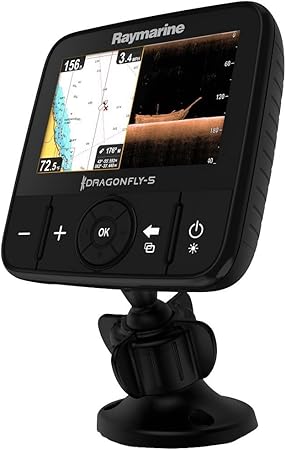Last updated: August 1, 2021
Raymarine Dragonfly PRO Series Complete Review: PRO 4, 5 and 7
The Raymarine Dragonfly PRO line distinguishes itself from the competition in two distinct ways: superior scanning technology and a high-definition color LCD screen that blows all others out of the water. Made to look sharp from every angle, this fish finder functions just as good as it looks. There are several units in the Dragonfly lineup, but we are only looking at the PRO units, which are considered the strongest of the bunch. We’ll specifically review the PRO 4, 5, and 7 and show off all of their features and how they compare to similar brands and fish finders.
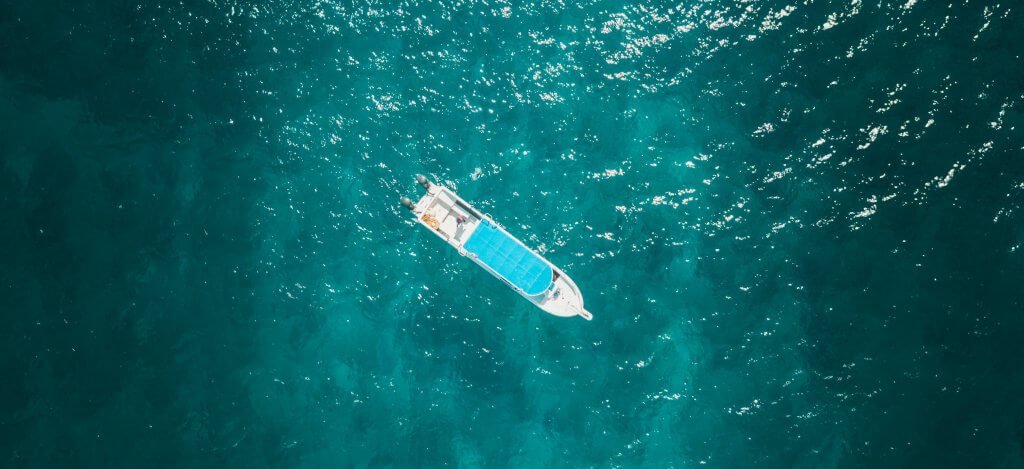
Raymarine Dragonfly 4 PRO
- Display: 4.3-inch screen, high-definition color LCD, 480 x 272 pixel resolution.
- Overall Features: Dual channel CHIRP, DownVision imaging, Raymarine Wi-Fish app (smartphone compatible), SonarChart and BoatApp compatible, microSD card reader.
- Frequency: 455/800kHz DownVision, 50/83/200kHz CHIRP.
- Depth: 600 feet with DownVision, 900 feet with CHIRP.
- GPS Capabilities: Yes, built-in GPS. It allows you to natively store 3,000 waypoints, 15 tracks (with up to 10,000 points), and 150 routes. Can store additional points in microSD expandable storage.
If you’re looking for a fish finder that’s packed to the brim with features while also being really easy to use, then the Dragonfly PRO 4 is definitely up your alley. This unit lives up to the moniker of PRO because it gives you everything you need, plus a bunch of extra things you wonder how you lived without.
The 4-inch screen is incredibly colorful, much more so than most other displays. Plus, it’s perfect for any weather condition, ensuring that you can see it during the brightest mornings, darkest nights, and harshest storms. Compare it to another 4-inch fish finder like the Lowrance Hook 4 and you’ll see how different this screen is. Better resolution, more color, and even better in low-light and inclement conditions.
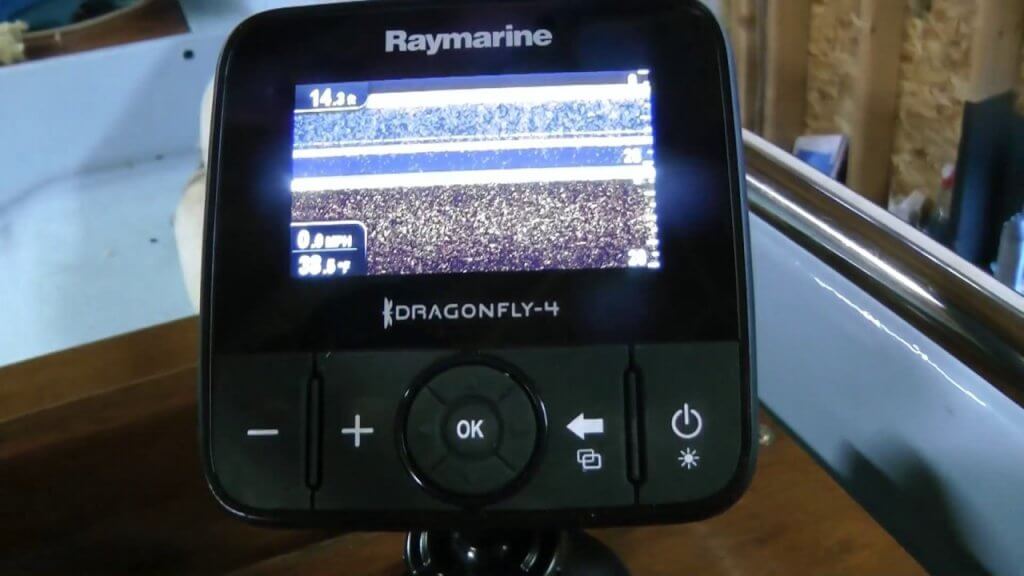
Let’s start off simply with the two imaging techniques here. The PRO 4 comes with DownVision and CHIRP. DownVision is just another name for down scan. This is when the sonar peers deep into the water and gives you a fish’s point of view under the water. This is perfect for trying to distinguish items underneath you and see if they’re really fish or an old boot. The DownVision scan goes down 600 feet, which should be enough for most bodies of water.
When it comes to broader and more general scans, you’ll be using the CHIRP imaging sonar. CHIRP is a type of scanning that bounces several simultaneous frequencies off the intended target so that you get a clearer picture of what’s around you. Originally created for military purposes, it’s been trickled down to fish finders for personal use. This is much better than a traditional sonar, which only uses one signal. This technique gives you significantly clearer images which also improving the overall range of the scan.
Not sure which one to use? That’s fine, just use both. The multi-image tool allows you to run both scans at the same time so that you know exactly what’s around you. No more guessing and hoping that you saw a fish. Now you’ll have no problem determining when you’ve hit that amazing fishing spot.
Here’s another cool feature of the 4 PRO: the Raymarine Wi-Fish app. Normally you’d have to sit by the fish finder, looking at every blip here and there while navigating the boat. Now imagine that you can open your smartphone and put the sonar right on there, allowing you to go where you want so that you’re not chained to the fish finder.
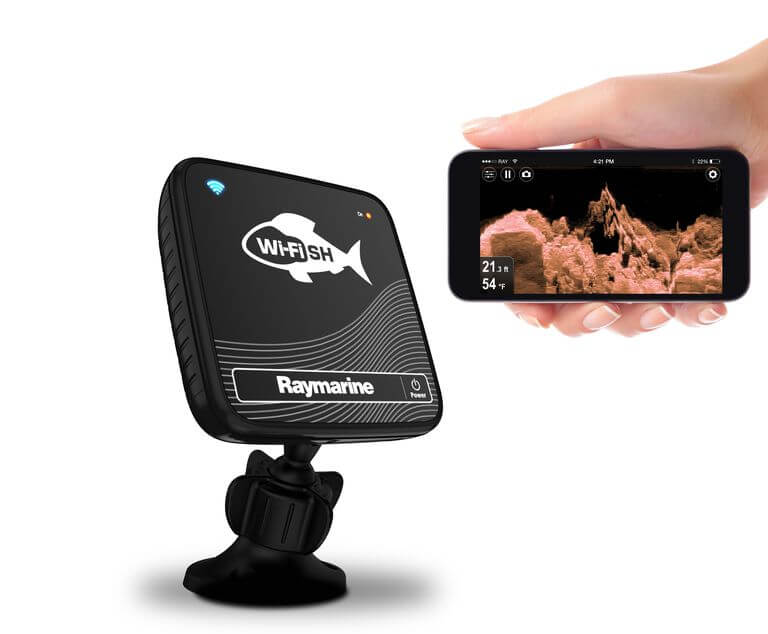
The Wi-Fish app allows you to check the scan from anywhere on the boat, as long as you have your phone with you (or your tablet! Tablets work too). This app is available for both iOS and Android, so almost any mobile device is compatible. Not only that, but you can control the fish finder from your device. So you can change the imaging type and do anything else, but you don’t have to be by the fish finder itself.
Moreover, the app allows you to sync and share data across the app so your fishing buddies (or others in the area) can see the same data if you want them to. This is a great way to find new fishing spots in the area or even find other people with a similar interest in fishing.
Do you think you saw a blip but can’t see it anymore? Or, are you trying to better understand where the fish go along your route? You can now rewind the sonar image and see what happened seconds or minutes ago. You can even pause and zoom in to see if there’s anything you missed along the way.
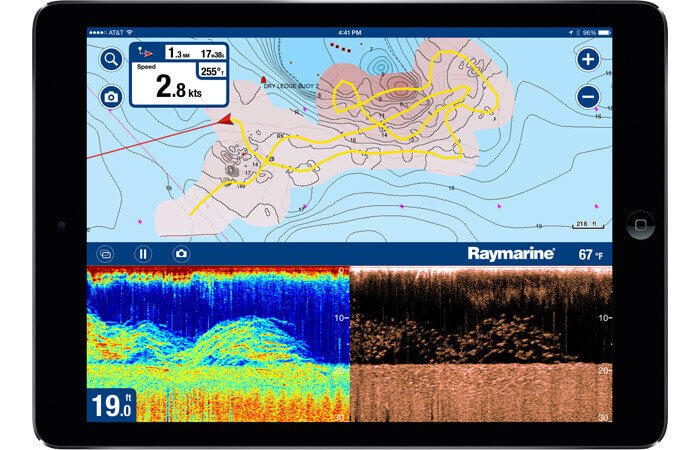
The built-in GPS here is capable of holding a massive amount of waypoints, plus it does a great job of showing where you are, how to get to a certain spot, and displaying your speed. But that’s not all. You can also connect to the Navionics Boating App and SonarChart Live, which gives you tons of maps, great fishing spots, and much more. These can also be cast to your smartphone or tablet through the Wi-Fish app.
Lastly, let’s talk about the mounting mechanism. The Dragonfly PRO 4 comes with a ball-and-socket mount that can go just about anywhere. As long as there is a small, flat surface, you can stick the fish finder there and it will stay until you remove it.
As you can see, the Raymarine Dragonfly PRO 4 is chock full of features, more than you’ll find in nearly any other 4-inch model. From multiple imaging types to an amazing screen and a helpful app, this will serve all of your purposes and making your fish trips the best ever.
Raymarine Dragonfly 5 PRO
- Display: 5-inch screen, high-definition color LCD, 800 x 480 pixel resolution.
- Overall Features: Dual channel CHIRP, DownVision imaging, Raymarine Wi-Fish app (smartphone compatible), SonarChart and BoatApp compatible, microSD card reader.
- Frequency: 455/800kHz DownVision, 50/83/200kHz CHIRP.
- Depth: 600 feet with DownVision, 900 feet with CHIRP.
- GPS Capabilities: Yes, built-in GPS. It allows you to natively store 3,000 waypoints, 15 tracks (with up to 10,000 points), and 150 routes. Can store additional points in microSD expandable storage.
If you compare this with the PRO 4 stats, you might notice that just about everything is the same. That’s not a typo or mistake, the only real difference here is the screen size and nothing else. Due to that, we’ll keep the review of the PRO 5 short since much of this is just a recap of the PRO 4.
The screen, as stated, is 5 inches and it uses LCD technology to create stunningly colorful scans that you don’t see with many other fish finders. It looks stunning from all angles, plus it can be used in any weather or lighting conditions.
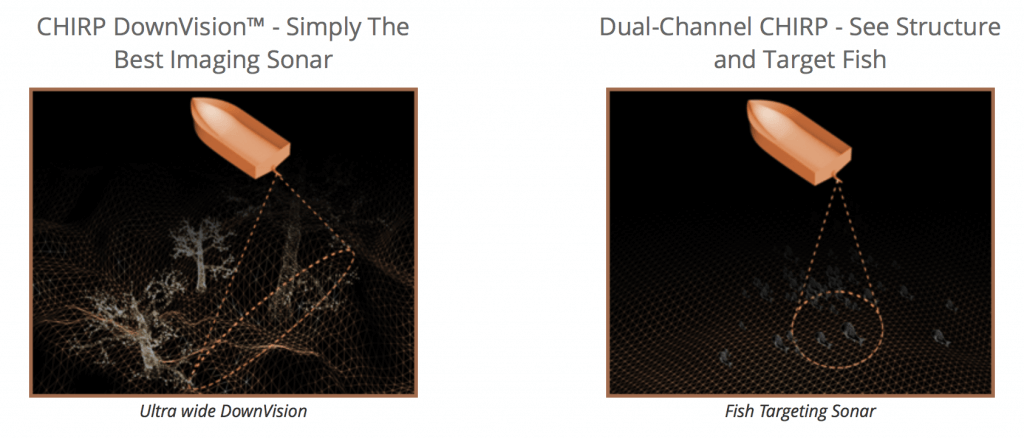
This fish finder gives you two scanning options of CHIRP and DownVision with multiple options to change the frequency (which changes depth and clarity), along with a multi-screen mode so that you can easily see both scanning options on the same screen. You can scan a maximum of 600 feet with DownVision and 900 feet with CHIRP, both giving you slightly different images that you can coordinate to see what is moving around you under the water.
The Wi-Fish app allows you to control the sonar and view all the images with your smartphone or tablet, and you can also rewind, pause, and zoom in on any captured data. The app also allows you to share this info with others, allow you to collaborate with a nearby fisherman or anyone else who is fishing with you.
The native GPS gives you data about your location and speed, plus it connects with several established route programs to give you great information about local fish and great fishing spots. You can store thousands of waypoints and hundreds of routes so that you’ll never get lost, plus you’ll be able to map your whole trip right from the PRO 5.
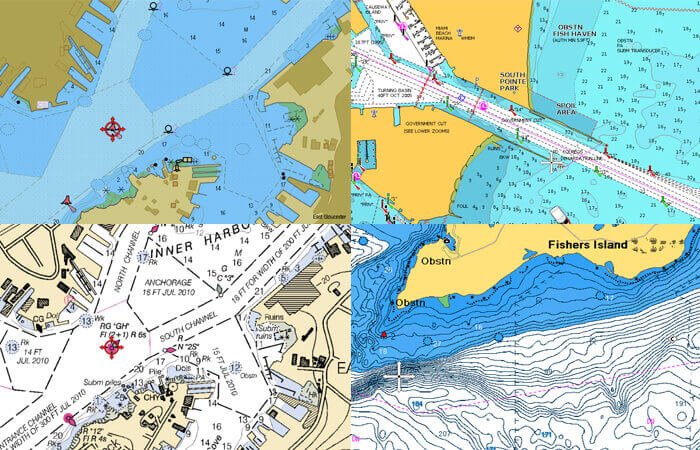
Still not enough waypoints for you? You can install a microSD card for expandable memory. This allows you to store even more images and waypoints. If one card runs out, you can always add another. This ensures that you can save as many points as you want, as long as you have some extra memory.
Much like the PRO 4, this is an amazing fish finder that comes packed with everything you need. From an amazing display to sophisticated imaging and scanning, this fish finder can be used by pros and amateurs alike to easily find good fishing areas. You’ll also love being able to see everything from your smartphone or tablet as you move about the boat at your leisure.
Compare this to a similar unit, like the Garmin Striker 5cv. The Striker wins in terms of depth and comes with some extra features for removing noise from your scans, but the Dragonfly PRO 5 wins in terms of display resolution and clarity, plus it has a much better GPS and works with map programs.
Raymarine Dragonfly 7 PRO
- Display: 7-inch screen, high-definition color LCD, 800 x 480 pixel resolution.
- Overall Features: Dual channel CHIRP, DownVision imaging, Smartphone Compatibility, SonarChart, and BoatApp compatible, microSD card reader.
- Frequency: 455/800kHz DownVision, 50/83/200kHz CHIRP.
- Depth: 600 feet with DownVision, 900 feet with CHIRP.
- GPS Capabilities: Yes, built-in GPS. It allows you to natively store 3,000 waypoints, 15 tracks (with up to 10,000 points), and 150 routes. Can store additional points in microSD expandable storage.
The Dragonfly PRO 7 uses the same guts as the other fish finders, but now there are two differences: one good and one bad. The good is that the screen is even bigger here. The resolution is the same as the PRO 5, but that’s not a problem. This is a fairly standard resolution for HD LCD screens, so everything still looks crystal clear. The LCD screen still functions well in all lighting and weather conditions, and it certainly outperforms most other fishfinder screens.
The bad change is that the PRO 7 is not compatible with the Wi-Fish app. You still have some smartphone compatibility, and some of the features are still available, but for some reason, the PRO 7 does not work with the app. You can view the sonar data from your device, but you can’t sync and share data. This is fine if you’re fishing solo or everyone is in one boat, but it’s a bummer if you were planning to use this and collaborate with others in the area.
Aside from that, it’s exactly the same as the PRO 4 and 5. You gain access to the CHIRP and DownVision scans, have a good depth of 600 to 900 feet depending on the imaging, and you can either switch between scans or run both simultaneously and see what comes up.
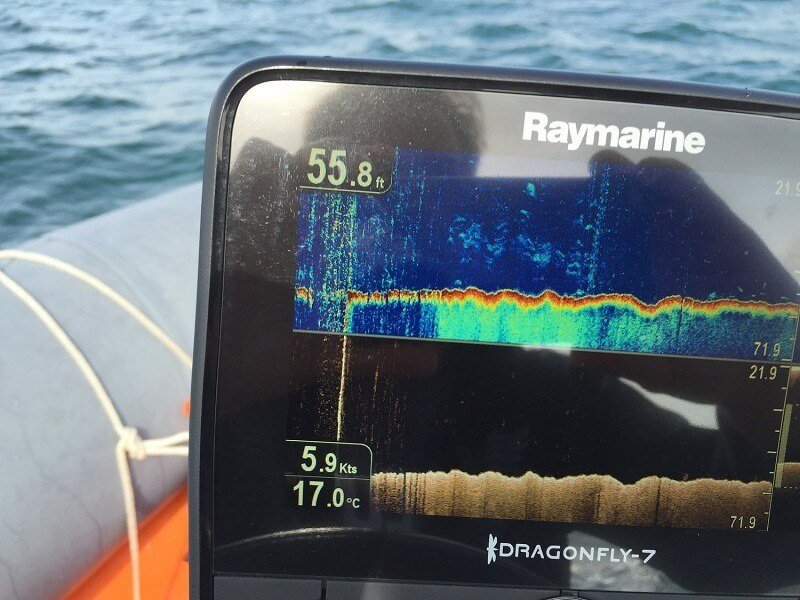
The GPS is just as good as the others. Even though the screen is larger, this doesn’t take any extra memory and thus doesn’t affect how many waypoints can be stored. You can also use microSD cards to increase native storage and save more waypoints and routes as needed.
Installation is simple, and the mounting mechanism is the same as the PRO 4 and 5. All you need is a small flat surface and you can place the PRO 7 there. While you might need a little extra room for the larger screen, the mounting area itself can be very tiny.
While the lack of the Wi-Fish app is a letdown, this is still an amazing fish finder that gives you a ton of features. It would have been nice to have a little more power, but you still get a lot from this package and you’ll have no problem finding any fish in your area. From the sophisticated CHIRP imaging to a fish’s POV with DownVision, you’ll see what’s down there and know when it’s time to set your line.
Compared with the Humminbird Helix 7, you’ll see some wins and losses here. The Helix 7 has a great screen, but not nearly as good as the PRO 7. They both have networking capabilities, with the PRO 7 working with your smartphone while the Helix 7 gets updates over Wi-Fi. Their GPSs are nearly identical, but the PRO 7 can store slightly more waypoints. However, Helix 7 wins in terms of depth.
Both are great choices, so be sure to check them out and see which one works for you.
You might also want to check out my best fish finder post to browse more models out there.


